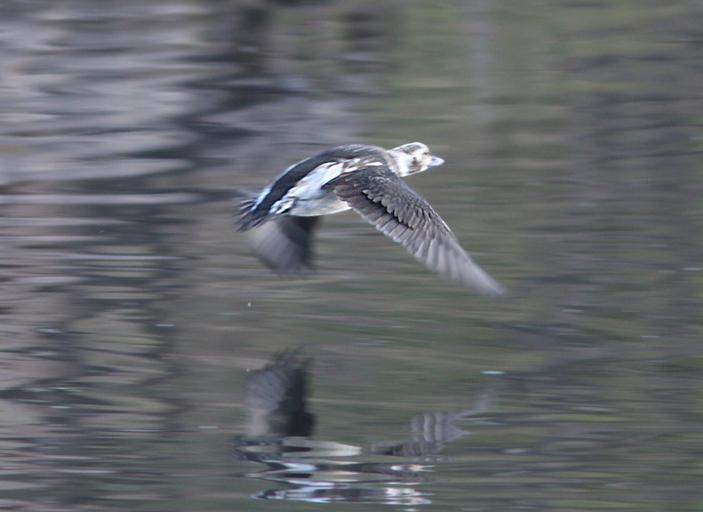MAKE A MEME
View Large Image

| View Original: | DUCK,_LONG-TAILED_(11-4-11)_pena_blanca_lake,_scc,_az_-17.jpg (2280x1660) | |||
| Download: | Original | Medium | Small | Thumb |
| Courtesy of: | www.flickr.com | More Like This | ||
| Keywords: outdoor animal bird water aquatic bird When first posted I had thought that this bird was an adult male. Doing more research, I now feel that it was a HY male in "supplemental 1" plumage or there-about. Primary reason being the amount of brown in the face and flanks and breast. I think that in an adult male in molt that the mix would be black and white, not brown and white. And although the bill of an adult male might be all gray at this time of year, I think that this is more likely of an imm bird. The following is copied from NA Birds: "Alternate I Plumage Prealternate I molt begins in Oct and continues to mid-Dec. Timing known only for male, assumed to be similar for female (Palmer 1976). Partial molt; Juvenal wing and Basic I tail and belly retained. Male. A less well-defined version of Definitive Alternate male plumage. Gray patch around eye more brown and less well defined, loral-patch dark brown (not black). Breast has smaller and less crisp black band than in Definitive Alternate. Back a mixture of black and white feathers; scapulars gray to white. Sides and flanks light gray, belly white." Robertson, Gregory J. and Jean-Pierre L. Savard. 2002. Long-tailed Duck (Clangula hyemalis), The Birds of North America Online (A. Poole, Ed.). Ithaca: Cornell Lab of Ornithology; Retrieved from the Birds of North America Online: bna.birds.cornell.edu/bna/species/651 doi:10.2173/bna.651 When first posted I had thought that this bird was an adult male. Doing more research, I now feel that it was a HY male in "supplemental 1" plumage or there-about. Primary reason being the amount of brown in the face and flanks and breast. I think that in an adult male in molt that the mix would be black and white, not brown and white. And although the bill of an adult male might be all gray at this time of year, I think that this is more likely of an imm bird. The following is copied from NA Birds: "Alternate I Plumage Prealternate I molt begins in Oct and continues to mid-Dec. Timing known only for male, assumed to be similar for female (Palmer 1976). Partial molt; Juvenal wing and Basic I tail and belly retained. Male. A less well-defined version of Definitive Alternate male plumage. Gray patch around eye more brown and less well defined, loral-patch dark brown (not black). Breast has smaller and less crisp black band than in Definitive Alternate. Back a mixture of black and white feathers; scapulars gray to white. Sides and flanks light gray, belly white." Robertson, Gregory J. and Jean-Pierre L. Savard. 2002. Long-tailed Duck (Clangula hyemalis), The Birds of North America Online (A. Poole, Ed.). Ithaca: Cornell Lab of Ornithology; Retrieved from the Birds of North America Online: bna.birds.cornell.edu/bna/species/651 doi:10.2173/bna.651 | ||||